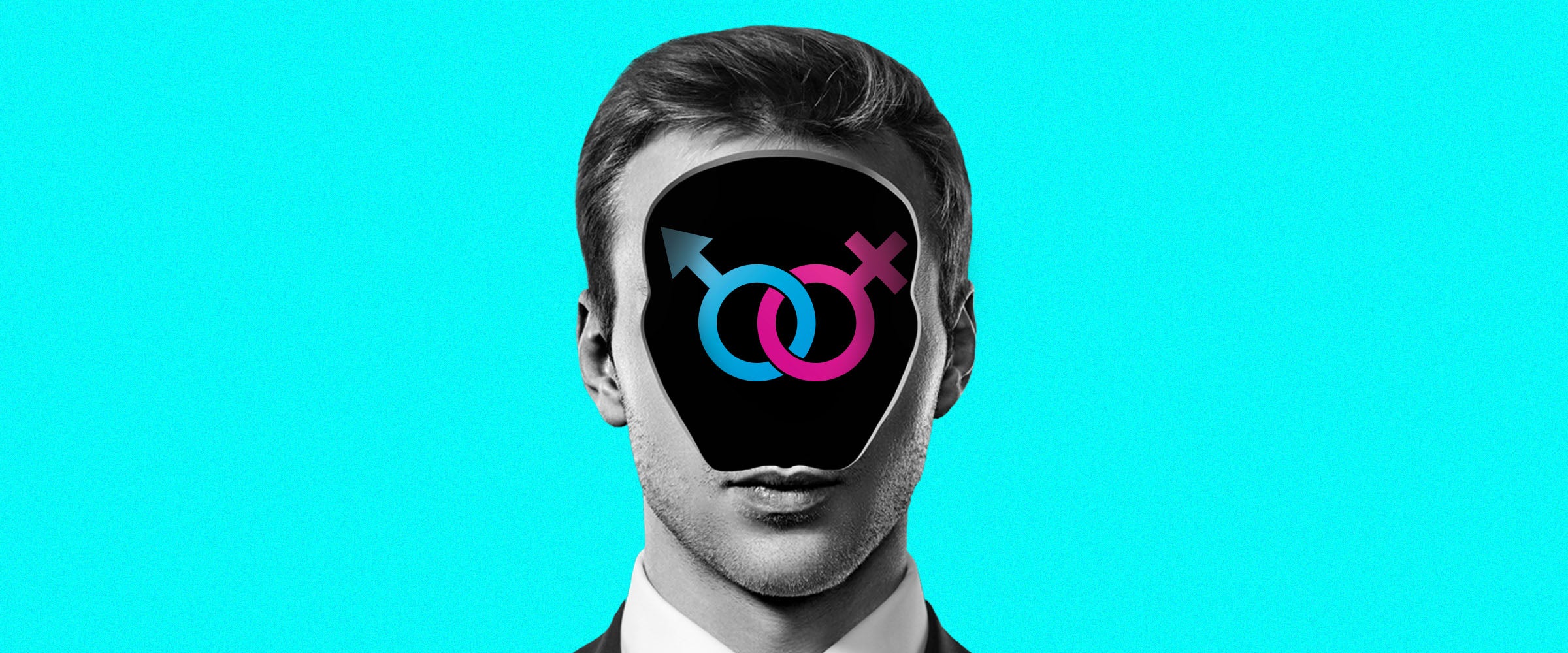In 1970, David Bowie created the androgynous alter ego Ziggy Stardust, depicted in his third album, The Man Who Sold the World. It was the beginnings of an androgynous revolution that would come to a head with the 1984 Grammy Awards, which according to Jefferis Kent Peterson, a scholar and reverend, ‘“underscored a dramatic shift in cultural consciousness,” reported Scientific American. “Highly androgynous musicians Boy George and Annie Lennox competed for the best new artist spot and Michael Jackson cleaned up with seven awards.”
To that end, Bustle writer Marlen Komar notes that, just as women were about to experience their second wave of feminism, men were growing their hair out, stealing eyeliner from their mother’s bathroom cupboards and donning tight, feminine silhouettes. “They were embracing their feminine side without having their masculinity or sexuality come into question,” she writes.
But that was just on the outside. David Mayer, an expert on leadership, diversity and ethics — who I spoke to a few weeks ago on the subject of how men straying away from masculine stereotypes in the workplace are often punished — tells me that while the idea of physical androgyny has been fairly salient among artists for some time, there’s an entirely different notion of androgyny that’s only recently making its way to center stage. “Psychological androgyny is completely separate from physical androgyny,” Mayer explains.
As per Brain Pickings, pioneering psychologist Mihaly Csikszentmihalyi writes that psychological androgyny refers to a person’s ability to be at the same time aggressive and nurturant, sensitive and rigid, dominant and submissive, regardless of gender. “A psychologically androgynous person in effect doubles his or her repertoire of responses and can interact with the world in terms of a much richer and varied spectrum of opportunities,” writes Csikszentmihalyi.
Mayer attributes Sandra L. Bem, a psychologist at Stanford University, with coining the term, as well as developing a measurement of psychological androgyny known as the Bem Sex-Role Inventory. The measurement rejected the idea that masculinity and femininity reside on a continuum and suggests that they are two independent dimensions. Bem’s research suggested that it’s possible to characterize a person as masculine, feminine or “androgynous” based on his or her endorsement of masculine and feminine personality characteristics.
So why does any of this matter? According to the same article in Scientific American, studies have shown associations between androgyny and a wide range of positive outcomes such as self-esteem; satisfaction with life; marital satisfaction; subjective feelings of well-being; ego identity; parental effectiveness; perceived competence; achievement motivation; cognitive complexity when evaluating careers; cognitive flexibility; and behavioral flexibility. “Psychologically androgynous people tend to be more creative too,” says Mayer. “They’re able to see the world through different lenses.”
Additionally, Mayer says that psychologically androgynous people tend to have better mental health and coping mechanisms. “It has to do with the ability to understand their own emotions and develop relationships with boys and girls, men and women.”
The good news is that you can develop characteristics commonly associated with the psychologically androgynous type. “It’s not like personality that won’t change all that much,” says Mayer. “It’s behavior that people can self-adjust.”
In fact, Mayer points to a recent study that reviewed 40 years of behavior based on the same Bem Sex-Role Inventory for men and women between the years of 1974 and 2012. “Women over those 40 years have become a little less feminine and leaning into the so-called stereotypically masculine traits like being ambitious, aggressive and dominant,” says Mayer. “More and more, we live in a society that encourages girls to be all they can be. But we haven’t had the equivalent socialization of boys yet.”
He’s right: In the same review, while the data shows that women, albeit gradually, are adjusting their traits to include more stereotypically masculine ones, men have stayed the exact same. “Men have two flat lines over 40 years,” says Mayer.
Way to evolve the performance, guys.

